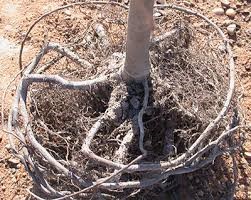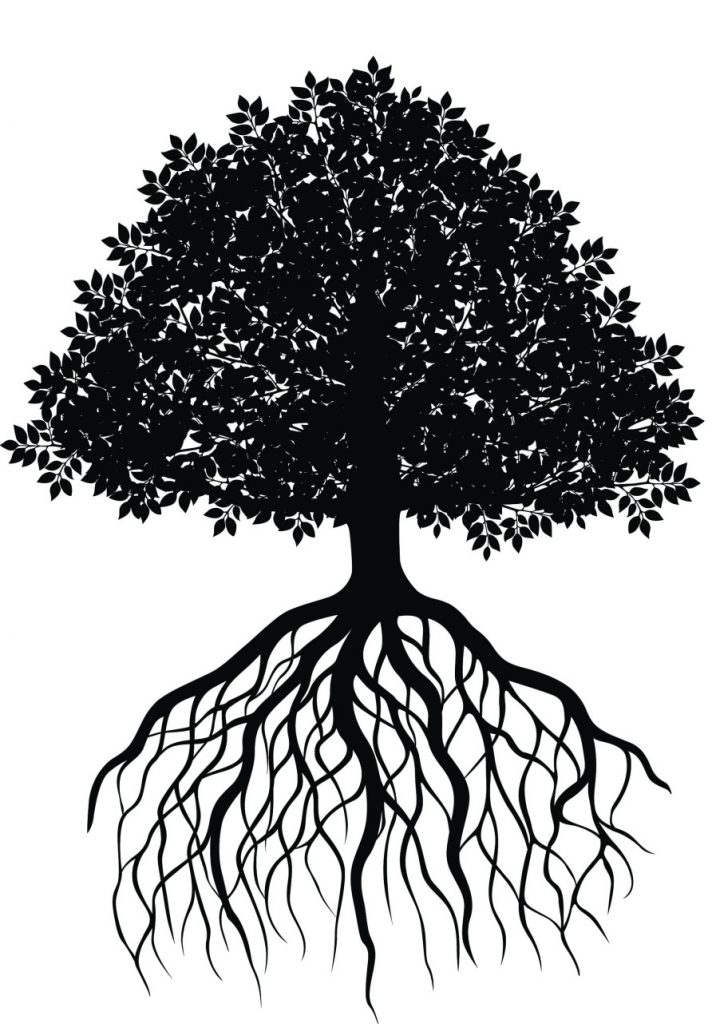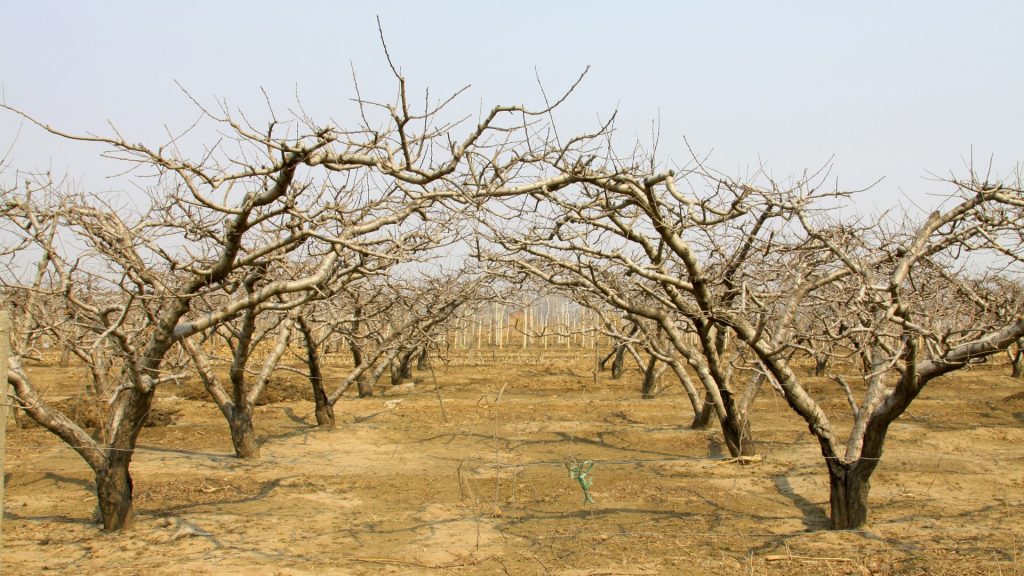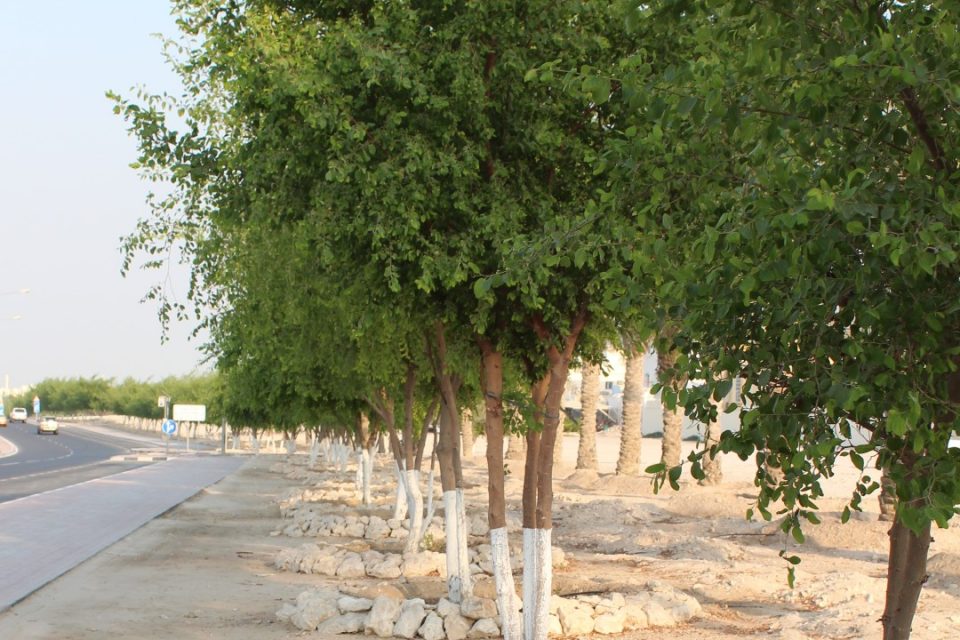Pieter Hoff passed away on 13 April 2021; very sad news. He invented the water-saving planting technology called Waterboxx® for his Groasis company. With this device, he dreamt about reforesting two billion hectares of dry and eroded lands, with the aim to arrest and possibly even reverse climate change.
| The trees in the righthand picture are irrigated; above ground they resemble trees but below surface they look anything like natural trees because of their underdeveloped root systems. |
The Groasis technology encourages the tap root of a young tree seedling to look for groundwater. This can take some time in a dry environment with deep groundwater tables. The Waterboxx provides the seedling with just enough water to survive (but not to thrive), and therefore buys the plant time to locate a water source. In normal conditions, the young plant would probably have dried out long before finding water.
Newly planted trees are commonly irrigated in many dry countries. Their root system never fully develops, and the tap root grows to the artificial water source (irrigation at the surface) rather than to the deep groundwater. It is called a ‘girdled tap root’ and it is quite clear what will happen to this tree if irrigation stops—for whatever reason. Irrigating tree seedling has created a very fragile system.

For a normal tree, biomass below ground (i.e. the root system) equals biomass above ground. The root system performs many beneficial functions: carbon sequestration, symbiosis with the soil-food web, securing water supply, providing stability, etc. A tree with a well-developed root system does not require irrigation water, care, or competent water managers. It may be a little less productive and grows a little slower, but it takes care of itself.

The vulnerable irrigated tree with its girdled tap root symbolizes a system that thinks short-term, is in a hurry, and is unwilling to invest in durable solutions. It makes no effort to work with nature. It depends on a complex chain of infrastructure elements: a desalination plant, pressurized water delivery system, electricity grid, competent water managers, the goodwill of city or farm managers and their accountants to continue funding all that is needed to sustain this, etc. In short: it is fragile—despite all the money spent. If—and when—a single element in this chain fails, the tree is dead, and the entire investment is lost in a few short weeks.
This system is, in fact, the antitheses of permaculture. It is also not necessary in most regions in the world.

Reversing environmental degradation and gradual drying out of landscapes is a massive undertaking that will probably exceed the means of any agency or community (right now). So, why not take the long view? Do not waste resources by investing in systems that are fragile and require lots of maintenance. Most of us do not have that money.
A more sustainable approach is based on designing every intervention (tree, check dam, micro reservoir, etc.) with maximum durability and least maintenance in mind. Cluster these elements in beneficial assemblies. In time, the accumulated impacts will foster landscape rehydration and probably change the micro-climate. No doubt it will take time. But at least there is steady—if slow—progress towards a regenerated landscape.
The guiding principle is that interventions—once established—require as little maintenance as possible. Short-cuts and temporary measures that are vulnerable to total-loss have no place in this long-term undertaking.
That is why I am so fond of Pieter Hoff’s very clever Waterboxx®.
